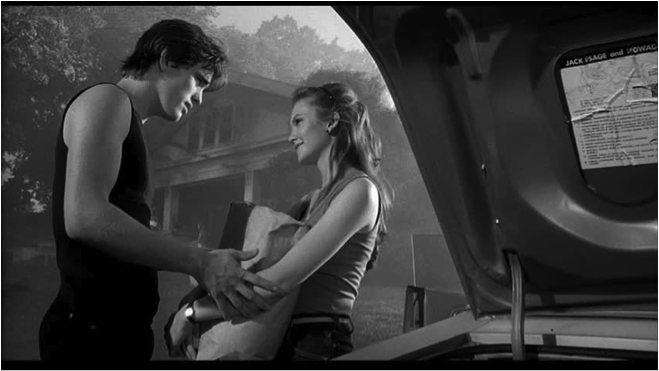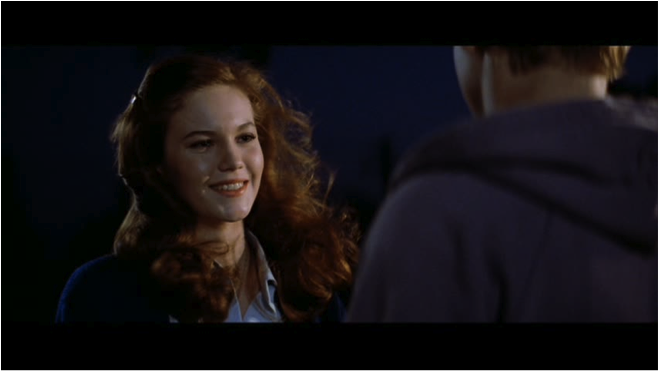Interview with Diane Lane
conducted by Chad Newsom
In my teaching and writing, I try to get students to understand the importance of detail: that the orchestration of details separates the good from the bad, the memorable from the forgettable. Thus, when I had the opportunity to interview Diane Lane at the Savannah Film Festival, I wanted to talk about this very issue in relation to three films she made with Francis Ford Coppola in the 1980s: The Outsiders (1983), Rumble Fish (1983), and The Cotton Club (1984). I focused on these films for two reasons: First, despite their reception at the time, they are immensely distinctive when viewed today. As Ms. Lane comments, “With the patina of time, some things actually do get better—or, get a kind of fair trial that they didn’t get in the context of when they first came out.” The first two, especially, seem unlike any other movies made for teens—in the 1980s or since; they were ambitious in a way that, say, the brat pack movies were not. And second, Coppola is a director known for his obsession with details. As he remarks on the DVD commentary track of Rumble Fish, “All things, whether they be works of art or resorts for hotels, [are] made up of a very big, broad vision … and then of a thousand little details that support it. It’s the big vision combined with the infinitesimal detail that brings these things into being. So once you have a direction … then concentrate on the detail and the touches that give you a thousand surprises and a thousand delights.” Thus, it must have been a significant moment in Ms. Lane’s early career to work with a director who thinks this way.
So much of the detailed work that goes into filmmaking is lost on most viewers. In many ways, this fact is inevitable: We watch a movie once, then quickly move on to the next one. And even if we pause to discuss the film or articulate our thoughts in written form, we spend merely a few hours on something that took months—or years—to make. In addition, what appears on the screen seems natural or effortless (as it should), which hides so much of the work that goes into a single shot or scene. But sometimes a shot can take dozens of takes or days of work, and film criticism should illuminate the amount of detailed work that goes into making a movie.
Question: Thinking about this issue in terms of your own work, how did working with a director like Coppola shape you as an actress and affect how you approach film performance?
Ms. Lane: Well, I had already been … like a horse that’s broken in—not broken, but broken in. It’s that fine line: you have to be willing to accept a rider on your back, take a saddle, and obey. There’s this interesting dichotomy that Francis wants: he wanted us to be that kind of horse, but he still wanted that free mustang. He still wanted to have that loose, free, think-out-of-the-box, don’t-watch-yourself, trust-your-own inspiration [kind of actor]. … Francis would ask questions to make us think and challenge ourselves—and to keep us present rather than being just a workhorse with a plow, doing the same thing over and over. He wanted that infusion from the performer.
Question: Your comment relates to—and already answers—my follow-up question: Can obsession with precision and detail hurt one’s performance—or the film itself—by constraining you too much?
Ms. Lane: A lot is up to what take they choose; that’s why they get so many different takes. Hopefully, you’re different enough in each one that
there’s a reason for doing a different take. At a certain point, you lose your mind; usually, after four takes, I’m not sure what to do differently.
Question: Did you tend to do a lot of takes on Rumble Fish and The Outsiders?
Ms. Lane: No, I didn’t feel like it was a lot.
Question: For example, I just re-watched Rumble Fish and noticed that many of your scenes take place in a single long take, which puts emphasis on the performer and your ability to carry the scene as opposed to the editing.
Ms. Lane: Which I love. I think [the long takes] make people stare at the screen more because they are aware that something could go wrong, like live theatre, because you are not cutting away to constantly rescue the moment or command where your eyes should go; you trust the audience more. That’s why I love two-shots more than close-ups because you have both actors and they are actually interacting. That’s a real moment; you’re capturing a moment and not just creating it with editing.
Question: Can you think of any instances/anecdotes from your work with Mr. Coppola that may look easy or effortless on screen, but which took enormous effort? One of my favorite examples is Leslie Caron’s anecdote about working with Vincente Minnelli on Gigi (1958). On the DVD’s commentary track, she says, “[Minnelli] was always fiddling with the background props, the colors. We were doing ‘I Don’t Understand the Parisians.’ We did it once, twice, three, five, ten, fifteen times. And I thought, ‘What does he want? What does he want?’ And I kept saying, ‘Vincente, what’s wrong, what did I do wrong?’ And he’d say, ‘Uh…uh…uh…do it again.’ So I’d do it again, and I thought: I am going to die; this is impossible. And then finally I did it and he said, ‘Ah! The swans were right!’ I hadn’t realized [all the retakes were] because of the swans in the background. “
Ms. Lane: [Laughing] Here’s my story: It was this sunset behind us in The Outsiders when I rendezvous with C. Thomas Howell and Emilio Estevez and I say, “Thanks, Ponyboy—you dig okay,” the hardest line to say with a straight face when you’re seventeen. [The scene’s difficulty] wasn’t because of us. Every day we’d get ready—we’d bring the car, we’d do the hair, make-up, costumes—aaaaand—the sunset wasn’t good enough. We’d go home, then set it all up again the next day. This went on for two weeks to get the exact sunset Francis wanted, to get a matching visual for the film’s “Stay Gold” theme song. And then we got it—in one take.
Published December 3, 2012.
Chad Newsom received his PhD in English/Film Studies from the University of Florida (2012), and he currently teaches in the Cinema Studies department at SCAD. His interests include film criticism, close reading, and aesthetics.


